Avalon now All-American luxury/sport sedan
By John Gilbert
ANN ARBOR, Mich. — During three restyling generations in its 17 years, the Toyota Avalon never distinguished itself as a dazzler, even though it never qualified to be an ugly duckling, either. Its heritage was as an elongated Camry-with-bling, but that image will be shattered forever by the 2013 Avalon, which soars, swan-like, with a combination of stunning attractiveness and breakthrough engineering.
First impression is striking, particularly for a car that began existence in 1995 as the replacement for the brick-shaped Cressida. A case could be made that the new Avalon is the most beautiful sedan ever dreamed up by Toyota, starting with a new grille that has an aggressive look, and with lines that flow front to rear over a low belt-line, meeting at a distinctive rear.
Akio Toyoda, the company’s young and performance-oriented chairman, was reportedly so impressed when he saw the proposed U.S. design that he ordered the car built without changing a thing. It was, even if it meant giving up a couple of inches of rear headroom to accept the sleek roofline.
If this indeed is a standard of design that will influence future Toyota sedans, we can celebrate it for more than just replacing Avalon’s comparatively boring predecessors. Previous Avalons were always competent and pleasant, but stylistically they were ho-hum appliances, just enough to satisfy Camry buyers seeking to move upscale without appearing pretentious by buying a Lexus. Toyota’s upscale Lexus line has redesigned its whole fleet, but the new Avalon gives up nothing to them in design.
Under that shapely body, the Avalon further takes wing by achieving quiet comfort — which is no surprise — complemented by enough handling agility to gain some All-American sportiness — which is.
The Avalon presented an additional challenge because it was the first time allowed any new vehicle to be totally drawn, designed, engineered and built by its expansive U.S. outlets. Instead of being started in Japan, the fourth-generation Avalon was designed by Calty Design in Newport Beach, Calif., and Ann Arbor, Mich., engineered at the Toyota Technical Center in Ann Arbor, and is being built at the Georgetown, Ky., plant.
“Back in the ‘80s, all Toyota vehicles shipped to America were designed, engineered and built in Japan with little or no input from the U.S.,” said Bill Fay, Toyota general manager, tracing the time line of increased building in U.S. facilities. “We’ve just passed a very special milestone for Toyota in the U.S.A. — our Kentucky plant has built our 25 millionth North American vehicle. Over the last 26 years, this represents a direct investment of nearly $24 billion, and the creation of 365,000 jobs in the U.S. But this Avalon is a real game-changer.” Read more
Cruel end can’t dim glow of UMD star Vogler
By John Gilbert
When the UMD football team lost an incredible 57-55 game at Missouri Western last Saturday, it was one of the cruelest finishes imaginable. Without question, the Bulldogs were up against a Griffon team that was their mirror-image, with an outstanding quarterback, and an explosive offense that could overrun pretty much any defensive scheme.
The Bulldogs trailed 14-6 in the first quarter, thanks to a pair of Andrew Brees field goals. They wrested a 20-14 lead at halftime. They held the lead at 28-21 after three quarters, but they were tied 35-35 at the end of regulation. The teams both drove for touchdowns in the first overtime, and again in the second overtime, inflating the score to 49-49. The rules say that if you get to a third overtime, teams must go for 2-point conversions if they score a touchdown. Central Missouri roared in for a touchdown, and made the 2-points for a 57-49 lead.
Then UMD quarterback Chase Vogler pulled out a couple of his special, career-long magic tricks to get the Bulldogs close enough, and Austin Sikorski crashed over from the 3 for his third overtime touchdown to make it 57-55. On the mandatory 2-point conversion, Vogler obviously was going to run a sprint out himself, maybe spotting a receiver, or maybe going for the end zone himself. He took the snap, and did his little shuffle step back and to the left. But incredibly, his foot caught the heel of a blocking teammate, and in an instant, Vogler fell to the turf.
End of game, end of season, end of fabulous, record-setting career.
Chase Vogler’s legacy at UMD is secure. He will forever be recalled for his four years of heroic play at quarterback, where he was always efficient, sometimes spectacular, and often found extracting victories from what appeared to be certain defeats.
He never seemed comfortable — more like tolerant — of the accolades that came his way. Watching him come out of Rosemount High School in the Twin Cities to jump into the starting role as a freshman, when teammate and fellow-senior Jon Lynch injured his elbow in the second game and was out for the season. Vogler took over, and his ability forced itself to the surface game after game. He became the first true freshman to start at quarterback in 47 years, and led the Bulldogs to a 10-0 conference title, and an 11-2 overall record.
He ran the ball so well that he didn’t need to pass much, that I was curious whether coach Bob Nielson thought Vogler would be good enough, or did he plan to recruit another quarterback who might be a better passer. “Chase is not a great passer, but he is a great athlete,” said Nielson at the time. “We can make him a better passer, but you can’t make someone a better athlete.”
Nielson was right, and Vogler took UMD on a 15-0 odyssey in 2010, winning the Bulldogs their second NCAA Division II championship in three years. As a junior, Vogler and the Bulldogs went 11-3, in something close to a miracle finish, when repeatedly they would pull off narrow escapes to win, right on into the playoffs. Quarterbacks tend to get too much credit when teams win, but invariably, Vogler was making decisions at the line of scrimmage on numerous pivotal plays that led directly to victories.
Vogler’s four years produced incredible numbers. Vogler rushed for 184 yards and two touchdowns in 29 carries, and was 14-20 passing for 195 yards, for a game total of 379 yards. That puts his four-year tally at 2,903 yards rushing, passing Corey Veech to place fifth all-time in UMD’s record book. He gained 2,307 yards more passing, and he moved up to No. 2 behind Ted Schlafke for total yards with 10,480. His final record, in 52 games started, is 46-6 — and three of the six losses came in NCAA DII playoff games, meaning he was 39-3 in four regular seasons.
That’s why the ending was so cruel. A slight trip, and Vogler might have regained his footing; he might have stumbled a couple of steps and found a way to pitch the ball to Sikorski. But he fell immediately, down flat, and had to end his fantastic career watching the ecstatic Griffons run past him to their bench for a wild celebration.
Classy as usual, Vogler said he might have tripped over his center’s foot, and yes, it was a disappointing way to end the season. Missouri Western coach Jerry Partridge said: “That kid is one of the very best quarterbacks I’ve eve coached against. That’s why they won a national title a couple years ago.”
Bob Nielson said: “If there’s a better playmaker in Division II football, I haven’t seen him.”
By the way, Nielson was right on about Vogler three years ago, too. He made Vogler a better passer, but nobody needed to make him a better athlete.
VOLLEYBALL REACHES NCAA
The UMD volleyball team had the benefit of competing in the first Northern Sun Intercollegiate Conference meet last weekend. It’s a benefit because the NSIC is the strongest volleyball league in DII, and UMD joins Concordia of St. Paul and Southwest State as the big three in the conference. UMD beat Concordia in Duluth early in the season, and Southwest State beat UMD. On the final regular-season weekend, Concordia beat Southwest, to leave all three tied for the title. When they decided who would be No. 1 seed, it was Concordia, so the conference meet was held at the St. Paul campus.
The Bulldogs flashed their usual force in the first round, beating Winona State in three sets. But in the semifinals, UMD was beaten by Southwest State, also in three sets, and came home. Surprisingly, Southwest State then beat Confordia for the playoff title, the first home loss suffered by Concordia all season.
When the NCAA Division II seedings were delivered Sunday night, Concordia held on to the No. 1 seed in the region, with Southwest No. 2. UMD (28-4) is No. 5, and must open against No. 4 Central Missouri (26-6) in the first round, which will be next Thursday (November 29). If the Bulldogs can win that match, they would probably run smack into Southwest State at the Central Regional, while Concordia is in the opposite bracket.
The interesting twist on the Central Region is that it will be held — guess where? — right back at Concordia of St. Paul. So right after beating Concordia on its floor, Southwest State must go right back there and try to win two rounds to get the chance to do it again. And UMD’s proud and talented Bulldogs are in perfect position to cruise right back down Interstate 35 and foul up those plans of a rematch.
HOME AND AWAY
We had an idea that this may be a tough rebuilding season for both the UMD men’s and women’s hockey teams. It’s been more than tough for the men, who split with both Ohio State and Notre Dame to open the season, then moved into WCHA play where the Bulldogs lost and tied at home against Wisconsin, then lost twice at Nebraska-Omaha, before going to Grand Forks and tying and losing against North Dakota — the team formerly known as Fighting Sioux.
That leaves the Bulldogs 0-4-2 in league play, and it looks odd to see UMD at the bottom of the league standings. Proves how spoiled we all became the last four years, during the “Jack Connolly Era.” This weekend, the Bulldogs return to AMSOIL Arena for the first time in a month, to face St. Cloud State. The Huskies, by the way, are on an upsurge from their own rebuilding, and stand 4-2 in league play after splitting with North Dakota and taking last weekend off.
The UMD women lost sparkplug winger Audrey Cournoyer, a senior who has decided to retire from playing with some chronic back pain that won’t go away. But the Bulldogs got things together to sweep a pair of 4-1 victories at St. Cloud State last weekend, rising to 4-5-1 in league play with a trip to North Dakota this weekend.
BCS MUST GO
The Bowl Championship Series might be interesting, but we once again are being insulted by the clear prejudice of the voters for the Southeast Conference. For the past decade, the SEC has been the best college football league in the country, so ESPN has hitched its prodigious influence to it and shamelessly promotes the SEC teams at every opportunity.
Recall that a week ago, Alabama was No. 1, with Oregon or Kansas State No. 2 and No. 3, and Notre Dame No. 4. The fact that all four were undefeated stirred up the obvious attraction a four-team playoff could be this year — say, Notre Dame vs. Alabama, and Oregon vs. Kansas State, with the winners to meet for the crown.
But Alabama was beaten, quite soundly, by Texas A & M two Saturdays ago. Last Saturday, I wore out my channel changer trying to watch both Oregon against Stanford and K-State against Baylor. The Baylor Bears put it all together for a stunning 52-24 victory over Kansas State’s previously unbeaten outfit. Then Stanford, an outstanding defensive team, found a way to harness Oregon’s explosive Blur Offense running attack and caught the Ducks 14-14, and beat them 17-14 in overtime.
Notre Dame, which beat Wake Forest, remains undefeated and rightfully took over the No. 1 slot in the national polls and the BCS ranking. But here’s where the bias comes in. Alabama lost to a great upset bid to Texas A&M, but now vaults up to No. 2 after winning 49-0 over West Carolina. (West Carolina?) Then Georgia (10-1) moves up to No. 3 after winning 45-15 over Georgia Southern (Georgia Southern?) What’s all this garbage about the grueling SEC schedules? Meanwhile, Florida wins 23-0 over Jacksonville State (Jacksonville State?) and rises to No. 4 in the BCS picture, while Oregon, an overtime loser to a Stanford team that was by far better than any of the other top teams played last weekend, drops to No. 5, and Kansas State, caught by surprise by a potent Baylor outfit, drops to No. 6.
If that’s not enough evidence of prejudice among the SEC Kool-Aid drinkers, both Alabama and Georgia got first-place votes in the coaches poll, ahead of Notre Dame. Now, I don’t think the Fighting Irish are the best college football team in the country, but they remain undefeated while the others have all stumbled, so they deserve the No. 1 slot. For now. I think Notre Dame my fall this Saturday, at Southern California, even though the Trojans were ambushed by another explosive team, UCLA, in a 38-28 shootout last Saturday.
Oregon faces another huge game, against arch-rival and No.15 Oregon State this Saturday. Alabama and Georgia, the two SEC darlings of the voters, both have “rivalry games” too, because Alabama faces Auburn and Georgia plays Georgia Tech. Now, Georgia Tech is a capable 6-5, but the Engineers play in the Atlantic Coast Conference, not the SEC. And the Alabama-Auburn game is usually a great game, but this season, Auburn is 0-7 and in last place in Alabama’s West Division of the SEC. While the guys at ESPN will try to fan that Alabama-Auburn game to a tube-watching frenzy, and they will sing the Crimson Tide’s glory after they win the game, but don’t be fooled: The oddsmakers have Alabama as an early 31 1/2-point favorite!
I’ve said before that I enjoy watching Oregon play more than any other team, but I was objectively impressed with the great game plan and execution of Stanford in taking down the Ducks. My hope, then, is that Alabama and Georgia find a way to lose before playing each other in the SEC championship game, where one of them will have to lose, just to see how much it will take before the Ducks (and Kansas State) climb back into consideration. In my little campaign to suggest that this season, the Pac-12 has more elite teams than the SEC, by the way, keep an eye on Stanford playing UCLA Saturday.
New Jetta combines turbo pep with hybrid mpg
By John Gilbert
SANTA FE, N.M. — Driving down from the 8,000-foot altitude of Santa Fe, we descended toward a curve so I flicked the new Jetta’s shift lever and downshifted to fourth gear, and when the curves tightened up, I dropped it down to third, both to slow a bit and to be in the power band for accelerating out of the curve.
Coaxing a good-handling sports sedan to trace those curves can be exhilarating fun, especially when deploying a direct-sequential gearbox to instantly respond. This was not a GLI, although its handling and performance created a fair impersonation of that hottest of Jetta models.
This was, in fact, the Jetta Turbo Hybrid, all new for 2013. What makes it unique is that by using a smaller-displacement 1.4-liter 4-cylinder engine, with direct-injection and turbocharging, the power of a larger engine suddenly is joined by the economy of a smaller one. And then it adds a lithium-ion battery pack as Volkswagen’s first-ever hybrid sedan. But the emphasis retains the fun-to-drive aspect of a true sporty car, even while getting hybrid-class fuel economy.
Without question, I enjoyed pushing the Jetta harder through the curves than my more conservative co-driver. In our brief driving, I found spots to go from 70-75 miles per hour and otherwise drove at 50-65, where speed limits required it. My feeling was that the power and stability was up there close to high-performance stature but without the uncompromising harshness sometimes found with sports-car rigidity. On the economy side, I finished my fairly hard segment and then clicked the computer until I saw the number: I had averaged 47.5 miles per gallon.
That was extremely impressive, although an hour later, my co-driver got 50.8, on mostly sustained highway driving. Our conclusion was that the Jetta Turbo Hybrid is either an extremely economical performance car, or an amazingly high-performing economy car.
“If you want to help this planet, building a green car is not enough,” said Rainier Michel. “It must also be appealing to look at, and fun to drive.”
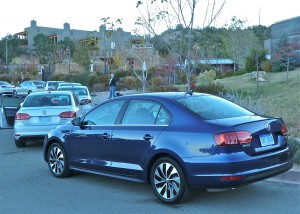
Jetta is aimed at the crowded compact class, but now is loaded with five different engine variations.
Michel is the very German vice president of VW marketing strategy, and he drives a high-performing Golf R in his private life, meaning it’s impossible to extract his urge for fun-to-drive motoring from everyday driving. We should all be thankful for that.
It’s important to connect all three words — Jetta, Turbo and Hybrid — because Volkswagen had never built a hybrid sedan before, and nobody has ever hooked up a turbocharged engine to a hybrid battery pack. VW has done both, to assure that the Jetta Turbo Hybrid would meet and exceed both hybrid and high-performance aspirations. Read more
Pathfinder expands Nissan’s midsize SUV presence
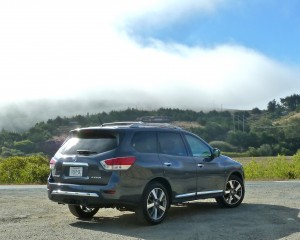
Larger, roomier Pathfinder adds comfort and convenience for 2013, as clouds roll in from San Francisco.
By John Gilbert
CALISTOGA, CALIF. — With so many sport-utility vehicles on the market, anything and everything is available, from 7-passenger family haulers, to off-roaders, to freeway cruisers, to sport and tow vehicles. Nissan makes SUVs for all those niches, but the fourth-generation 2013 Pathfinder will apparently attempt to cover all them in a single bound.
The 2013 model has a shapely form that bears little resemblance to the previous three generations, which spanned 26 years as solidly successful SUVs. The new one is longer, lower, wider and lighter, and takes the breed in a new direction with greater comfort, versatility, and better fuel economy.
The first Nissan Pathfinder was a sturdy all-terrain sport-utility vehicle that came out in 1986 and became an industry staple for 10 years. The second generation Pathfinder hit showrooms in 1996 and lasted until the third, which ran from 2005-2012. All of them maintained the family resemblance and were comfortable and efficient all-weather family vehicles.
The midsize SUV segment has made some major moves, however, capturing the younger family market where buyers are worried more about connectivity and amenities than they are in working only as a sportsman’s vehicle. It’s still fashionable to tow the fishing boat or camp trailer and cover the rugged road to the lake, but taking the kids and their teammates to practices, games, or out-of-town tournaments in comfort while watching DVDs or listening to MP3 music has taken on a greater importance.
“We think we’ve hit the sweet spot for people with families,” said Rich Miller, Nissan’s product manager for the U.S. and Canada. “For them, having two rows of seats might be too small, and having a third row that is readily accessible is important. We also wanted to maintain the power we have and the drivability, but we needed to improve our fuel economy. We also think our buyers will give up a little in towing for more fuel economy.”
At that, the Pathfinder still tows 5,000-pound trailers, although that’s down from 7,800. Two reasons for that: Nissan still sells the larger Armada with its V8 for heavy-duty towing, and the new Pathfinder gives up its previous 4.0-liter engine for the 3.5 V6, and uses front-wheel drive when it’s in 2-wheel-drive mode for the first time, compared to the previous rear-drive. Read more
Giants Stun Tigers, Baseball World
By John Gilbert
Before the World Series started, if someone predicted one team would win in a four-game sweep, the unanimous concensus would have been the Detroit Tigers. Instead, the San Francisco Giants pulled off an incredible feat by sweeping the Tigers in four straight.
It was an inspiring Series for a Giants team of basically unsung heroes. Before the Series, or at least before the playoffs, who ever heard of Pablo Sandoval, Marco Scutaro, Brandon Crawford, Gregor Blanco, Buster Posey, Barry Zito, Ryan Vogelsong, Matt Cain or Sergio Romo, or Hunter Pence. Among others. They rose up together and formed a perfect explanation to the overworked term “chemistry.” This team had it. They chased Justin Verlander, the best pitcher in baseball, in Game 1, and they never looked back.
Posey is the Joe Mauer of the National League. Not only a superb catcher, he led the Major Leagues in hitting, but few realized it, because the Giants play way out West, after East Coast newspapers and ESPN have gone to sleep. I did say, after the league playoffs, and the stirring rallies San Francisco made to beat Cincinnati and St. Louis from seemingly hopeless deficits, that I thought the underdog Giants had far better defense than the Tigers. Turns out, once they beat Verlander in Game 1, the edge in pitching shifted decidedly to the NLers. And after watching closely, I believe Brandon Crawford might be the best shortstop in baseball. And Gregor Blanco didn’t have to come through with his game-breaking hits to be a hero after his sensational catches in left field. Scutaro was just as brilliant as he was while earning the NL playoff MVP honors.
And now we, as basically American League loyalists, listen to the alibis that Detroit got rusty from the long layoff after sweeping the Yankees. Think about that. Sweeping the Yankees, which was considered impossible, is now being transformed to a liability! Too bad about the slump, people say. Slump? They said the same thing about the Yankees in the AL final against Detroit. It’s just that we trade the names Rodriguez and Cano for Cabrera and Fielder.
Face it, a great-hitting and red-hot Tiger team was completely outplayed by the magical Giants. The last out of the Series was a perfect microcosm of the Series: Cabrera, the AL triple-crown winner, comes up for a last chance against Romo, the Giant closer who looked like he had gotten a bad deal from a costume shop when he tried to buy a fake Rasputin beard. Romo has a good fastball, but he throws a slider that genuinely appears impossible to hit. It starts breaking when it leaves his hand, and it keeps breaking, although he seems to be able to control how much it breaks by its velocity.
I made the comment that with his slider, why would Romo ever bother throwing a fastball? He went after Cabrera, slider-slider-slider-slider-slider…Strikes, foul balls, it was a classic duel. Romo wound up one more time, and everybody at Comerica Park knew it would be one more slider . Cabrera knew it, too, and he was ready. Instead, Romo fired a fastball, low and on the inside corner. Cabrera froze, and took the pitch. Called strike three. Game over. Series over.
Congratulations, San Francisco Giants.


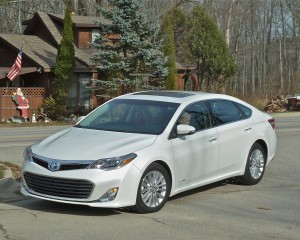
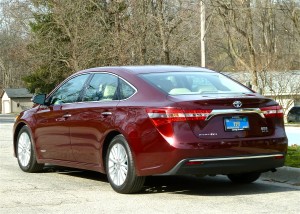
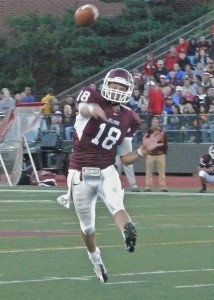
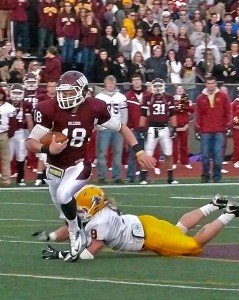
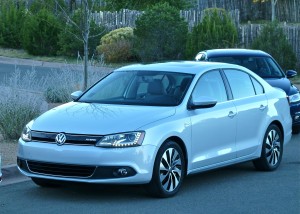
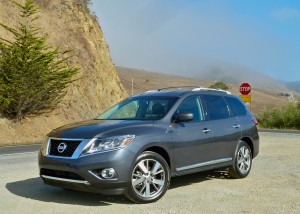
 John Gilbert is a lifetime Minnesotan and career journalist, specializing in cars and sports during and since spending 30 years at the Minneapolis Tribune, now the Star Tribune. More recently, he has continued translating the high-tech world of autos and sharing his passionate insights as a freelance writer/photographer/broadcaster. A member of the prestigious North American Car and Truck of the Year jury since 1993. John can be heard Monday-Friday from 9-11am on 610 KDAL(www.kdal610.com) on the "John Gilbert Show," and writes a column in the Duluth Reader.
John Gilbert is a lifetime Minnesotan and career journalist, specializing in cars and sports during and since spending 30 years at the Minneapolis Tribune, now the Star Tribune. More recently, he has continued translating the high-tech world of autos and sharing his passionate insights as a freelance writer/photographer/broadcaster. A member of the prestigious North American Car and Truck of the Year jury since 1993. John can be heard Monday-Friday from 9-11am on 610 KDAL(www.kdal610.com) on the "John Gilbert Show," and writes a column in the Duluth Reader.